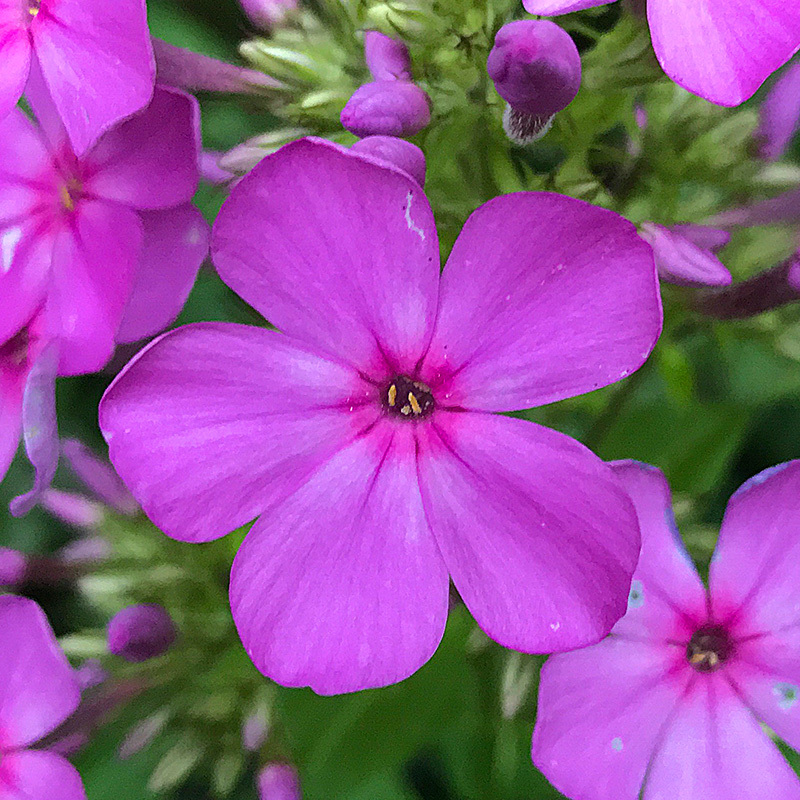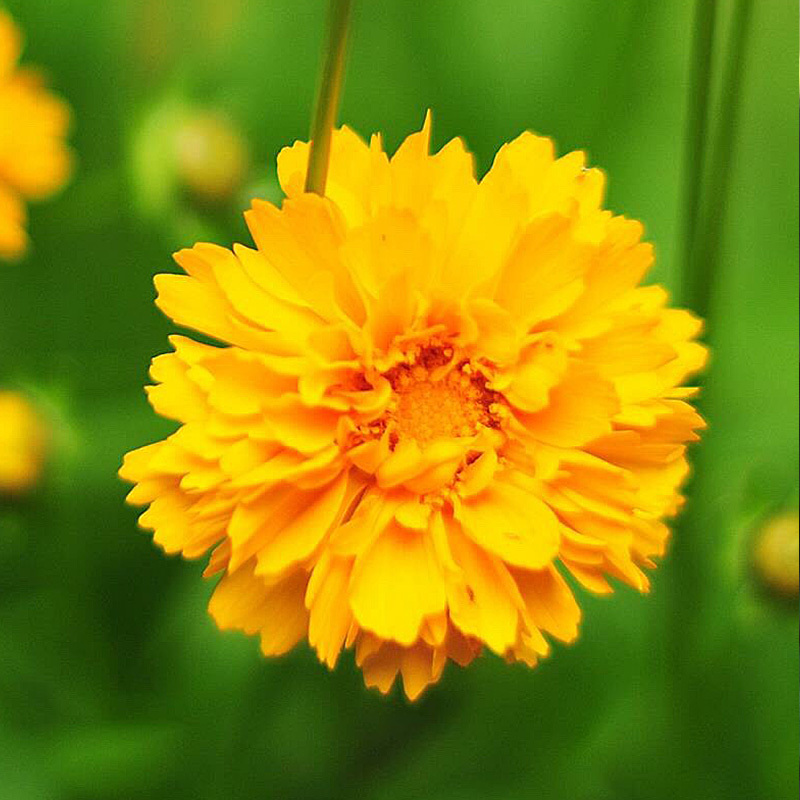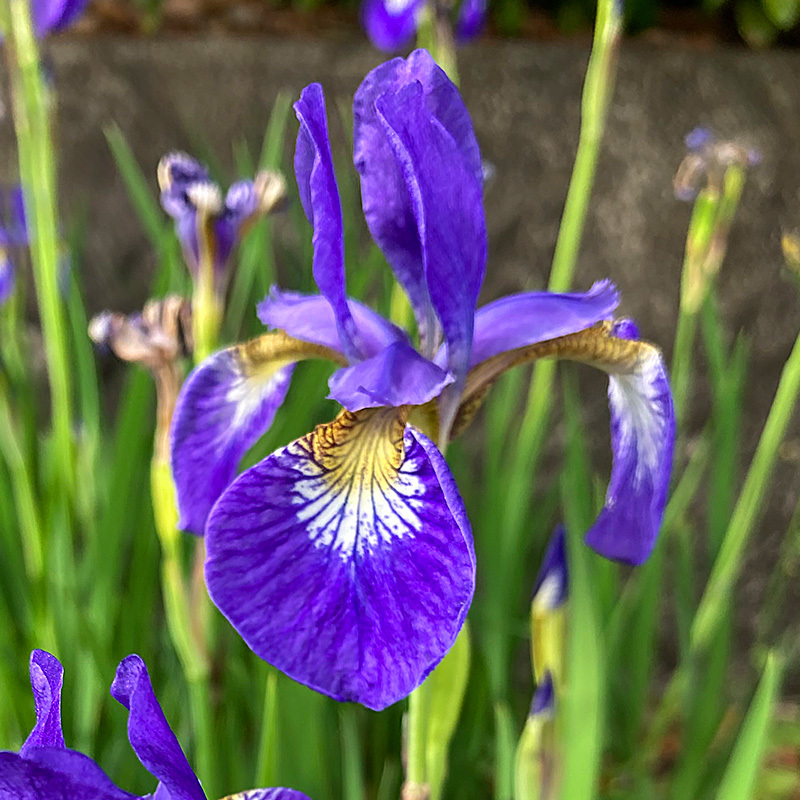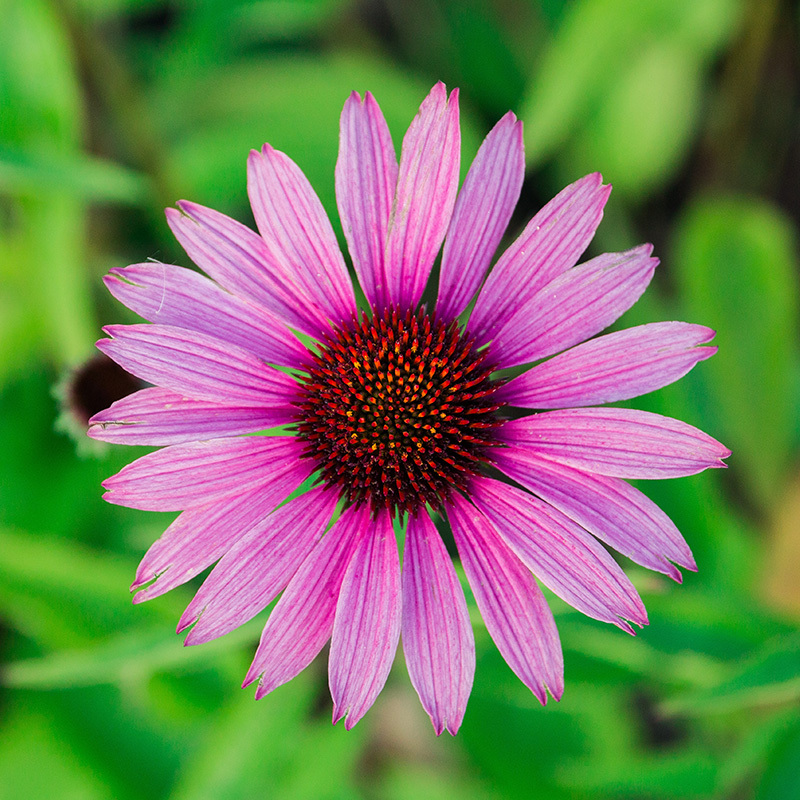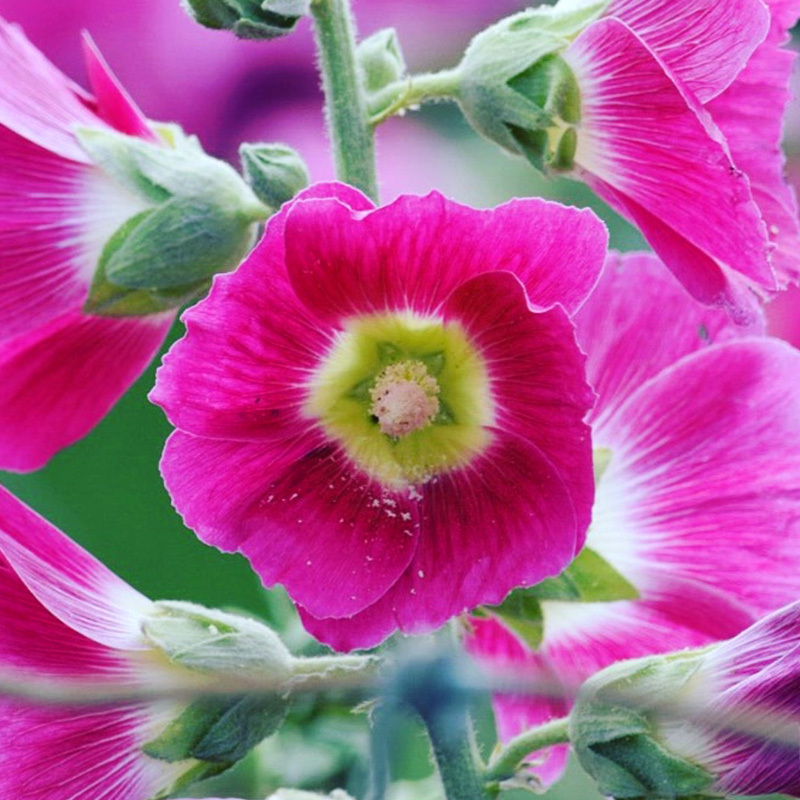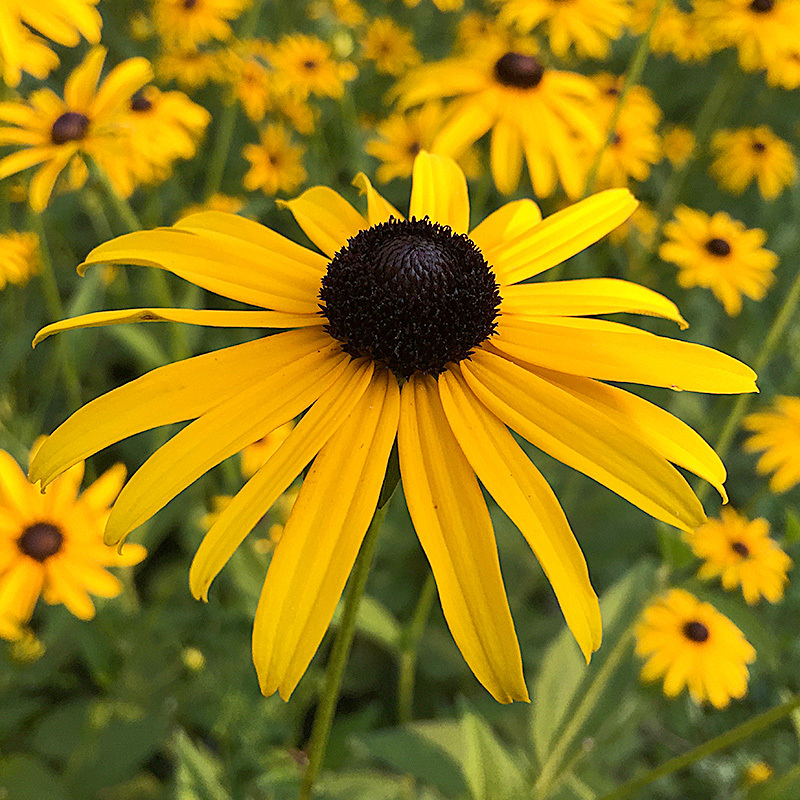The Design
O.C. Simonds designed the formal garden in 1910. The garden includes outdoor “rooms” defined with a hedge border surrounded by plants placed in natural clusters. The garden’s design blends formalism—a traditional garden style defined by orderly plantings, straight lines, and geometric shapes—with naturalism—a style defined by irregular plantings and curved lines that reflect local landforms.
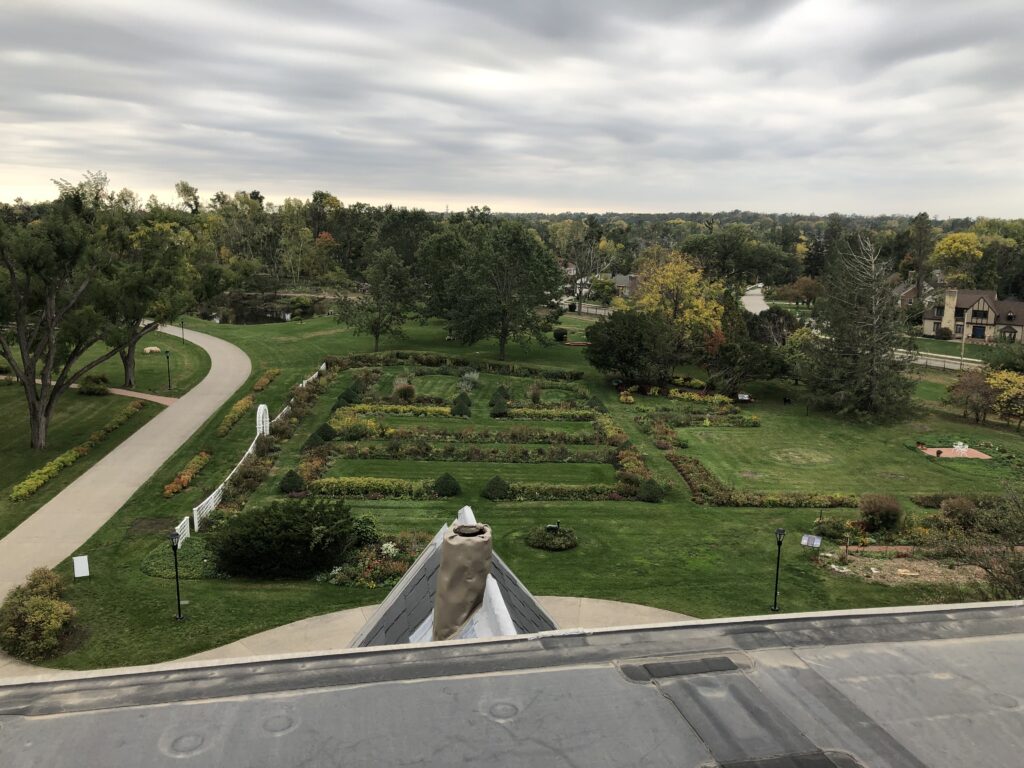
Discover Historic Plants
Modern conditions including a large deer population, tree growth, the arrival of Japanese beetles, and new sun patterns following the August 2020 derecho have changed the garden’s appearance over time. However, the “rooms” and hedge border remain today. Plantings reflect a variety of species found in the garden throughout the last century.
Look for the following plants that have historic ties to Brucemore:
- Phlox
- Coreopsis
- Siberian Iris
- Purple Coneflower
- Hollyhocks
- Black-eyed Susan
A Gardener’s Passion
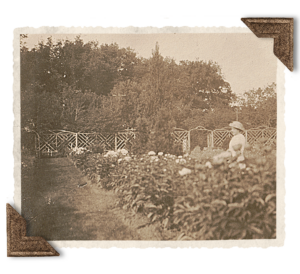 Irene Douglas, an amateur gardener, took an active role in the planning and design of Brucemore’s landscape. Proud of her gardens and landscape, she invited the community to enjoy her estate at community garden shows during her residence.
Irene Douglas, an amateur gardener, took an active role in the planning and design of Brucemore’s landscape. Proud of her gardens and landscape, she invited the community to enjoy her estate at community garden shows during her residence.
After her husband’s death in 1923, Irene continued to make additional changes to the estate. Upon Irene’s death in 1937, her daughter Margaret Douglas Hall inherited Brucemore. She and husband, Howard, added the pet cemetery, moved the orchard, and changed the formal garden fence. While they showed interest in the landscape and garden, Margaret did not demonstrate the same degree of involvement or passion as Irene.

